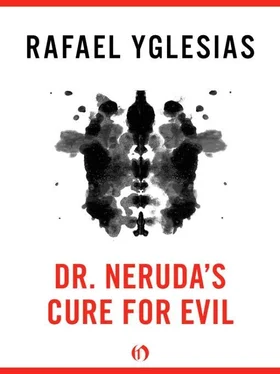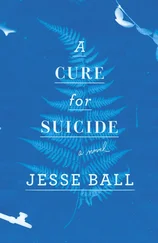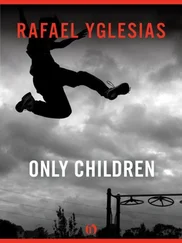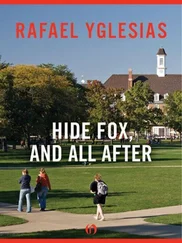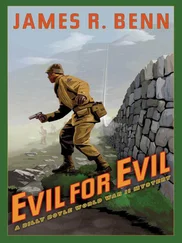I was impressed, a little concerned, but not alarmed. I expected him to succeed, and if not, I felt confident I could help him adjust. Besides, soon I had my own crisis at work, as threatening and profound as any I had faced, a challenge that led me to doubt the value of my work with children and whether my creation, the clinic, had a right to exist.
The beginning was innocent enough. A colleague at Webster University, Phil Samuel, asked us to supply him with tapes of our first few interviews with young children (six and under) who were victims of sexual and physical abuse. He promised merely to view them for his own guidance, make no copies, and return them promptly. Why? I asked, reluctant to release these sensitive videos. Samuel had recently finished a clinical study, which he offered to send me before its publication, that showed young children are extremely susceptible to suggestion. Indeed, they proved to be vulnerable to an interrogation so gentle and unobtrusive that it hardly qualifies as suggestion. The study’s design was admirable. Two graduate students conducted private interviews with eight children. They were asked a series of questions about routine experiences, such as, “Have you been to the beach?” Among the banalities was a ringer. “Were you ever bitten by a mouse?” was asked in a neutral tone. At first, all the children said no. The interviewers didn’t react, didn’t repeat the query, and didn’t follow up. A week later, the same questions were asked of the same children. This time, half changed their answer, agreeing they had been bitten by a mouse. The follow-ups were neutral and bland. “Where were you when you were bitten?” “Did you have to go to a doctor?” Within three sessions, all had said yes and added a host of imaginative details. I was skeptical of his results — until I read the study and watched his videos.
I brought them to Diane. She brushed them off without looking. “This is the same old crap in a new disguise: Children can’t be believed. It’s the witch hunt defense.”
I insisted she watch the videos on a Sunday. We sat together as child after child, without any intimidation or insistence on the part of the questioner, invented complicated stories of events that never happened. One boy’s fabrication was particularly vivid. He said he had gone into the cellar with his older brother, they had fought over an action figure until his brother pushed him into a pile of old clothes. Hidden in the pile was a mouse who bit his right index finger. He was taken to the hospital, bandaged, given an injection and sent home. His father put out traps, the mouse was killed, buried in the backyard and, in a final twist of justice, his brother was punished for shoving him. After the fantasy was in full bloom, the boy’s father was instructed to tell him that, as far as he knew, there had never been a mouse, a visit to the hospital and so on. The boy freely admitted the story was just pretend. The father told him that was okay, no one would mind, and he could tell the truth in the future.
At the next interview, the graduate student informed the boy he knew his father had talked to him, knew the events were false and that he could say so without fear of a scolding. The boy refused to recant. He insisted vehemently that every detail was true and proceeded to embellish further. In Samuel’s opinion, the more this boy was doubted, the deeper the imagined event was pushed across the border into reality. Fantasy had become traumatic memory.
“So? It’s just one kid,” Diane said.
I showed her the written data. All the children eventually provided descriptions of a biting mouse that never happened and, when challenged, were loath to abandon them. Yes, they were young enough to be genuinely confused about the difference between fantasy and reality; nevertheless, they qualified for testimony in court. (The significance of their ages in terms of giving evidence is far from academic. In the courts, children six and under had been considered to be the most reliable witnesses of abuse, presumably because they were too ignorant of sex to make it up. I had sworn that was my expert opinion to more than a dozen juries, without allowing for a smidgen of doubt.)
While she read on, I left to make coffee. When I returned, Diane had rewound the tape to watch key moments again and again, looking, I knew, for some mistake in the tone of the question asked at the first interviews: “Were you ever bitten by a mouse?” The question was asked as casually as possible. And the first response was equally casual — a simple no. The next week, sometimes a hesitation, sometimes an assent; yet by the third week, all nodded their cute little heads to say solemnly in a wounded tone, “Yes.”
I wondered if somewhere Freud was laughing.
Diane finally shut off the machine. She pushed the documents away with her foot — they were scattered across our coffee table — pulled off her glasses, leaned back, and shut her eyes. “In the end,” she said, her voice deeper than usual, “its just a story about a mouse.” She remained stretched out, hands behind her head, eyes closed as if she were going to sleep. Her composed freckled face looked as cute and innocent as a fantasizing child.
I waited for her to elaborate. She seemed to be falling asleep. The subject was closed. I laughed scornfully. “That’s it? That’s what you got out of it?”
Her eyes, only her eyes, opened. “You know what I mean.”
“I don’t.”
She unlocked her hands, dropped her feet from the coffee table, sat up and argued, “There’s a big difference between a kid accusing a mythical mouse of biting him and accusing a real person, especially a relative, of playing with her vagina.”
“I agree. But why don’t they give up the fantasy when they’re told everybody knows it’s untrue and that doesn’t matter?”
“Come on!” Diane shook her head at me. She stood up and then seemed to realize she had nowhere to go.
“Come on, what?”
“That’s ego, that’s formation of identity. They know the lie has no consequence. What’s going to happen — the mouse will be punished unfairly? They’re defending their pride, not the lie.”
Diane’s point was a good one. That’s exactly why they wanted our tapes: the mouse study’s implications were limited. I believed Phil Samuel had no ax to grind in the increasingly bitter debate within and without psychology over the accusations of children, from their reliability to whether the process of questioning and cross-examination is as harmful a trauma as the event under investigation.
[Of course, adults long to convince themselves that the accusations of children are unreliable. In crimes between adults, victims can always be suspected — again, wrongly — of somehow being a party to their suffering. A mugging caused not by the mugger but by the victim unwisely wandering into a dangerous neighborhood; a rape caused by a woman’s provocative dress, rather than by the rapist, and so on. This is all part of the natural desire to deny random danger and viciousness in life. How much better to think of the world as an obstacle course that can be negotiated skillfully to a happy ending. At least children are presumed, albeit somewhat superficially, to be innocent. Other than Freud and child abusers, few articulate that children wish for sex with adults, and Freud wrote of fantasy, not actual collaboration. Inevitably, all parents hurt their children, most trivially, nothing like real abuse; and yet even that trivial guilt haunts us and we wish for an exorcism. Our route to maturity, without therapy, requires we believe our hurt didn’t happen or that we can safely ignore the pain as exaggerated. I don’t resent the unwillingness to believe; for some, it’s a useful defense. I’m angrier at those therapists who — either through sloppiness or ambition — do incompetent work and confirm the widespread impression that children routinely make up stories of physical and sexual abuse.]
Читать дальше
